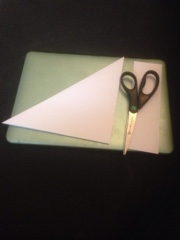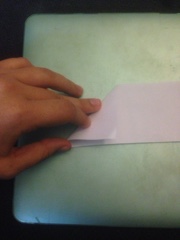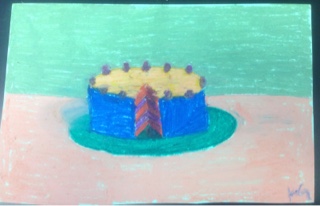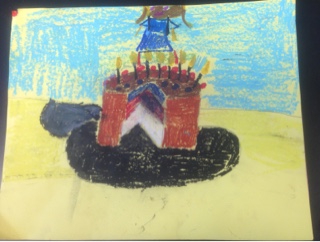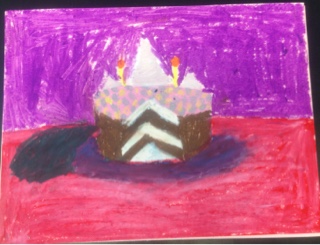Here's how to do it!
If you're starting with plain old printer paper, cut the rectangle down to an even square. You can do this without measuring! Just fold one corner down flush with the edge. The bit that's still sticking out is what you need to cut off and set aside.
(Sometimes I pre-cut the starting page into the needed square for the kids, depending on the size of the group and the time constraints.)
That fold we did to mark our square was coincidentally also the first step!
If you are giving your students square pieces to start with, instruct them to fold their page in half to create the first triangle.
Step two is to fold our triangle into a second, smaller triangle.
Now here comes the tricky part. Most students will need to go over this several times before they remember how this should look.
Bring the triangle to an upside-down pyramid.
Fold one corner up to meet near the center, keeping the bottom point in that pointy shape.
Then cross the other side over the top. We call this stage the "fox face."
Hardest part is over! Nearly there!
Cut off the "ears" of the top; this we refer to as the ice cream cone stage.
I followed a kind of semi-circle line here but straight across works as well.
Once you have your cone shape, start cutting! Random little bits removed from the bottom, either side, and top all make your snowflake more interesting. Play with large vs small sections. Nothing is off limits! Just don't let cuts intersect: they'll end up cutting your snowflake in half.
Carefully unfold to unveil your one-of-a-kind design - just like a real snowflake!
Festive!
Remember that strip we set aside? Now you can make three tiny ones to accompany your big one. Waste not!
For the little guys it's best to stick with super simple shapes.
Now all these need is a little tape and they make a window look winter-ready. Or, you can apply them to a number of other projects, like our snowman collages.
Let it snow!



